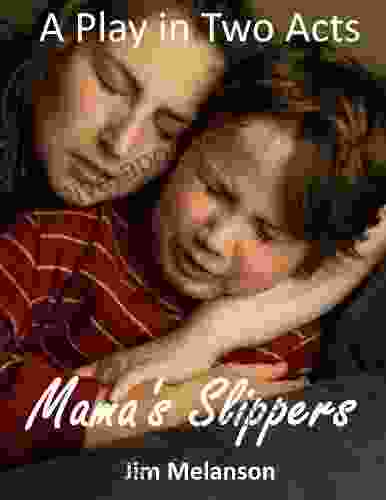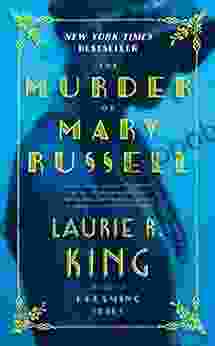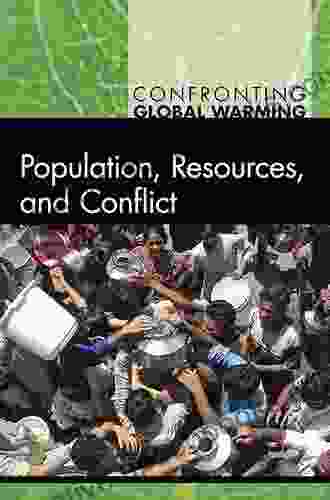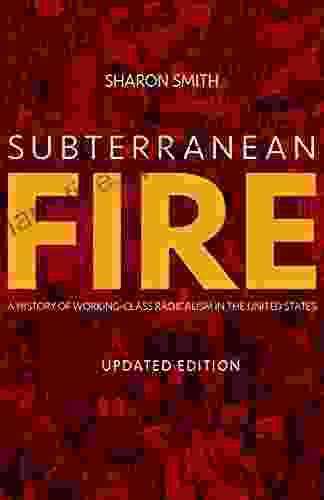The History of Working Class Radicalism in the United States: A 3000-Word Exploration

Throughout the annals of American history, the working class has played a pivotal role in shaping the nation's social, economic, and political landscapes. From the colonial era to the present day, workers have organized, protested, and fought for their rights, giving rise to a rich tapestry of radical movements that have left an enduring legacy on American society.
4.4 out of 5
| Language | : | English |
| File size | : | 1197 KB |
| Text-to-Speech | : | Enabled |
| Screen Reader | : | Supported |
| Enhanced typesetting | : | Enabled |
| Word Wise | : | Enabled |
| Print length | : | 504 pages |
| Lending | : | Enabled |
This article delves into the complex and fascinating history of working class radicalism in the United States, shedding light on its origins, ideologies, key figures, and lasting impact. Spanning a vast chronological canvas, we will explore the various forms of working class resistance, from the early craft unions to the mass labor movements of the 20th century.
The Colonial Era: Roots of Dissent
The seeds of working class radicalism were sown in the colonial era, where class divisions and economic inequality were deeply entrenched. Artisans, farmers, and laborers chafed under the yoke of British rule and the emerging capitalist system, which favored the wealthy elite.
In response to these grievances, radical movements such as the Shays' Rebellion (1786-1787) emerged. Led by Daniel Shays, a former Revolutionary War captain, farmers and laborers in western Massachusetts protested against high taxes, foreclosures, and the government's inability to address their economic distress. Although the rebellion was ultimately suppressed, it signaled the growing discontent and willingness of working people to engage in collective action.
The 19th Century: Industrialization and Labor Unrest
The 19th century witnessed the advent of industrialization, which transformed the American economy and workforce. Factories and mills sprang up in cities, attracting a vast pool of workers who endured harsh working conditions, low wages, and limited rights.
In response to these oppressive conditions, labor unions emerged as a force for worker empowerment. The first national labor federation, the National Labor Union, was founded in 1866. Led by William H. Sylvis, the union advocated for an eight-hour workday, equal rights for women, and the formation of worker cooperatives.
However, the labor movement also faced fierce opposition from employers and the government. The Great Railroad Strike of 1877, which involved over 100,000 workers, was met with brutal suppression by federal troops. The Haymarket Affair in Chicago in 1886, where police violence against striking workers resulted in the deaths of both protesters and police officers, further inflamed tensions.
The Early 20th Century: Rise of Socialist and Communist Movements
The turn of the 20th century marked a period of profound social and economic upheaval in the United States. The rapid growth of large corporations and the concentration of wealth in the hands of a few led to widespread disillusionment and a search for alternative political and economic systems.
Socialism and communism emerged as powerful ideologies that appealed to many working class Americans. The Socialist Party of America, founded in 1901, advocated for a democratic and egalitarian society based on collective ownership of the means of production. The Communist Party of the United States, founded in 1919, embraced a more revolutionary approach, seeking to overthrow capitalism and establish a socialist state.
These radical movements played a significant role in organizing workers and advocating for their rights. They mobilized workers in major strikes, such as the Lawrence Textile Strike of 1912 and the General Motors Strike of 1936-37, which led to important concessions from employers.
The Mid-20th Century: Labor's Golden Age and the Cold War
The period following World War II marked a "golden age" for American labor. The economy boomed, and unions achieved substantial gains for their members. The Taft-Hartley Act of 1947, while limiting some union powers, also recognized the right of workers to organize and bargain collectively.
However, the Cold War era also cast a shadow over the labor movement. The rise of McCarthyism and the fear of communist infiltration led to the suppression of radical voices and the persecution of many labor leaders. The American Federation of Labor-Congress of Industrial Organizations (AFL-CIO),the largest labor federation in the United States, purged communist and socialist elements from its ranks.
The Late 20th Century and Beyond: Decline and Rebirth
The late 20th century witnessed a decline in the power and influence of unions. Deindustrialization, globalization, and the rise of a service economy led to a shift in the labor force and a decrease in union membership. Conservative policies under Presidents Reagan and Bush further weakened unions, making it more difficult for workers to organize and bargain for better wages and working conditions.
Despite these challenges, working class radicalism has not disappeared. In recent years, there has been a resurgence of labor activism, as workers seek to address issues such as economic inequality, climate change, and racial injustice. New forms of worker organizing, such as the Fight for $15 and
4.4 out of 5
| Language | : | English |
| File size | : | 1197 KB |
| Text-to-Speech | : | Enabled |
| Screen Reader | : | Supported |
| Enhanced typesetting | : | Enabled |
| Word Wise | : | Enabled |
| Print length | : | 504 pages |
| Lending | : | Enabled |
Do you want to contribute by writing guest posts on this blog?
Please contact us and send us a resume of previous articles that you have written.
 Book
Book Novel
Novel Page
Page Chapter
Chapter Text
Text Story
Story Genre
Genre Reader
Reader Library
Library Paperback
Paperback E-book
E-book Magazine
Magazine Newspaper
Newspaper Paragraph
Paragraph Sentence
Sentence Bookmark
Bookmark Shelf
Shelf Glossary
Glossary Bibliography
Bibliography Foreword
Foreword Preface
Preface Synopsis
Synopsis Annotation
Annotation Footnote
Footnote Manuscript
Manuscript Scroll
Scroll Codex
Codex Tome
Tome Bestseller
Bestseller Classics
Classics Library card
Library card Narrative
Narrative Biography
Biography Autobiography
Autobiography Memoir
Memoir Reference
Reference Encyclopedia
Encyclopedia Allan M Winkler
Allan M Winkler Julio Ramos
Julio Ramos Alison Peirse
Alison Peirse Alison Sherlock
Alison Sherlock Oren Litwin
Oren Litwin Alison Ford
Alison Ford Marc Cameron
Marc Cameron Will Vaus
Will Vaus Guy Cuthbertson
Guy Cuthbertson Shiping Hua
Shiping Hua Allen Lyne
Allen Lyne Julia Marquardt
Julia Marquardt Mary Diyon
Mary Diyon Ronald L Greer
Ronald L Greer David Wray
David Wray Donald J Savoie
Donald J Savoie Paige Glotzer
Paige Glotzer Bern Dean
Bern Dean Alpheus J Chewning
Alpheus J Chewning C L Heckman
C L Heckman
Light bulbAdvertise smarter! Our strategic ad space ensures maximum exposure. Reserve your spot today!

 Noah BlairUnveiling the Secrets of Life: Discover the Fascinating World of Hormones and...
Noah BlairUnveiling the Secrets of Life: Discover the Fascinating World of Hormones and...
 Felipe BlairMama Slippers Plays: A Hilarious, Heartwarming, and Unforgettable Theatrical...
Felipe BlairMama Slippers Plays: A Hilarious, Heartwarming, and Unforgettable Theatrical... Vince HayesFollow ·10.1k
Vince HayesFollow ·10.1k Wade CoxFollow ·14.4k
Wade CoxFollow ·14.4k Melvin BlairFollow ·16.7k
Melvin BlairFollow ·16.7k Ivan TurgenevFollow ·5.6k
Ivan TurgenevFollow ·5.6k Jarrett BlairFollow ·15.2k
Jarrett BlairFollow ·15.2k Isaac AsimovFollow ·18.1k
Isaac AsimovFollow ·18.1k Galen PowellFollow ·9.9k
Galen PowellFollow ·9.9k Andres CarterFollow ·12.5k
Andres CarterFollow ·12.5k

 F. Scott Fitzgerald
F. Scott FitzgeraldUnravel the Enigmatic Murder of Mary Russell: A...
Prologue: A Grisly Discovery In the...

 Connor Mitchell
Connor MitchellLittle Quilts: Gifts from Jelly Roll Scraps
Embrace the Art...

 Harold Powell
Harold PowellPoverty Survival Hope In An American City: A Pulitzer...
A testament to the resilience of the human...

 Ray Blair
Ray BlairConfronting Global Warming: Population, Resources, and...
Global warming is one of the most pressing...

 Gary Cox
Gary CoxStyle Your Most Authentic Self and Cultivate a Mindful...
Unlock Your True...

 Caleb Long
Caleb LongEmbark on a Colorful Patchwork Adventure: Discover 20 To...
Step into the captivating world of...
4.4 out of 5
| Language | : | English |
| File size | : | 1197 KB |
| Text-to-Speech | : | Enabled |
| Screen Reader | : | Supported |
| Enhanced typesetting | : | Enabled |
| Word Wise | : | Enabled |
| Print length | : | 504 pages |
| Lending | : | Enabled |








